With almost 22 languages and over 700 dialects in India, wedding traditions and rituals can significantly vary based on the region of India the hosting family is from and their origin. While you should be safe following our general guidelines, expect variations.
r e e v i v e' s
INDIAN WEDDING TIPS
* Disclaimer *
r e e v i v e ‘ s Tip:
Although the garments worn to South Asian events can be versatile, appropriateness has historically been guided not only by personal preference, but also by the need of the occasion and sensibilities of the host. If you know the hosting families are more conservative, find more covering styles.
mehndi ceremony
The Mehndi is a traditional pre-wedding ceremony in which the hosting family hires a professional henna artist to decorate the bride/female guests. The bride and the groom’s family usually celebrate the ritual separately, in their respective homes. Rumor has it that the deeper the bride's henna stain, the happier and more loving her marriage will be.

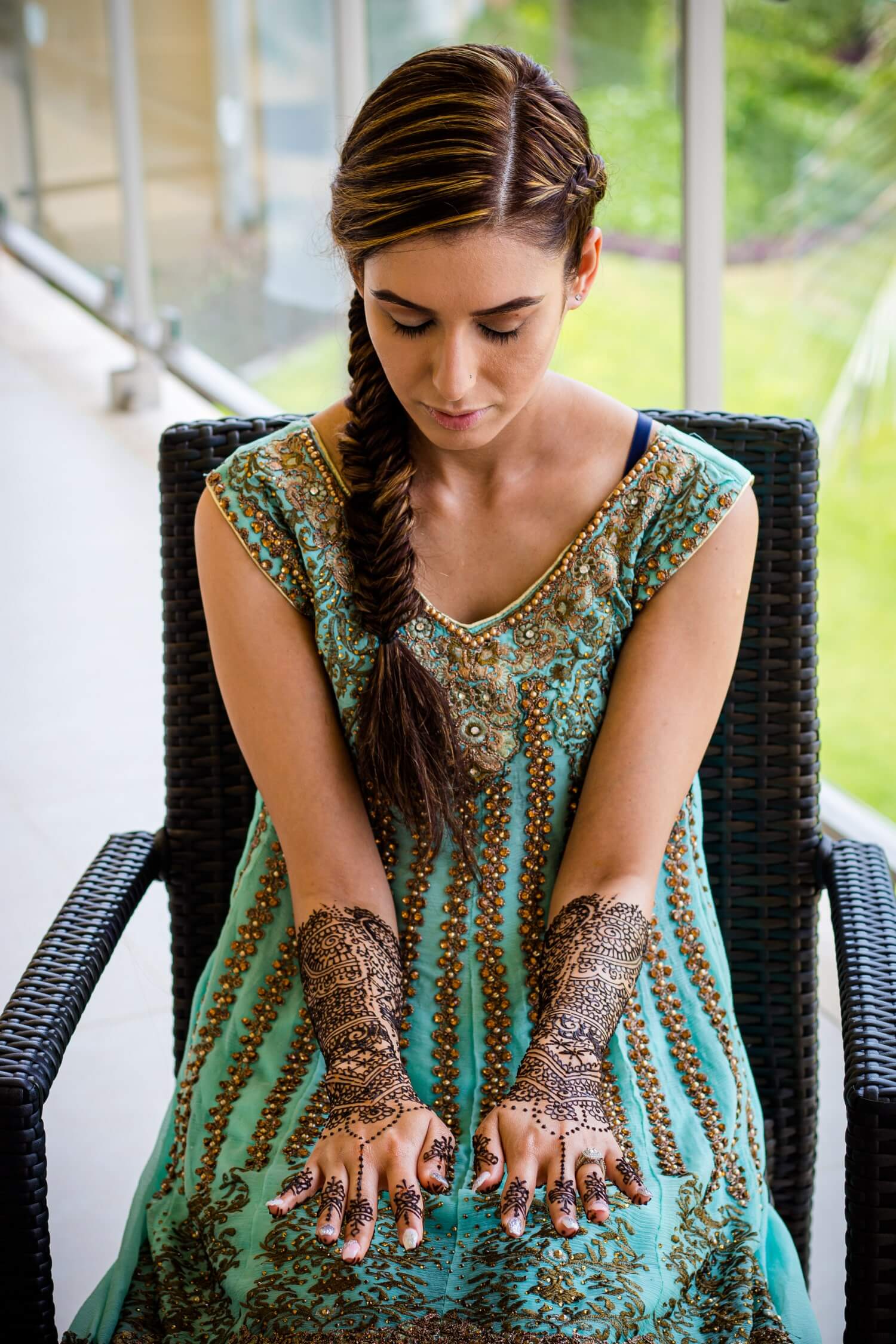
Dress: Dress comfortably and casually. We suggest nothing too tight or embellished, as you may be seated on the ground during the application. Have fun with your style ... bright colored salwar kamis, suits, kurta tops, legging, all go!
r e e v i v e ‘ s Tip:
Try avoiding anything with long/loose sleeves or outfits needing frequent adjustments. Henna can take several hours to dry and you won’t be able to use the area of the body that Henna is applied (usually hands).
As for the bride, your feet will also be decorated. Short lehenga or bottoms that can be easily rolled up (and that will stay up!) will make your evening much more seamless.
Don’t wear anything you wouldn’t mind getting stained. Henna tends to flake when it dries and if it touches on fabrics while it is wet it can be difficult to remove (Think: red wine stain, but green).
haldi / pithi ceremony

A pre-wedding tradition that is usually held separately, at the bride and groom’s respective homes (often outdoors if the weather permits). In this ritual, the family members and close friends apply Haldi, or a paste consisting of turmeric, sandalwood powder, and rose water on the bride and groom as they are serenaded in song. It’s usually applied starting with the feet, then moves to the knees, arms, and the face last. Haldi is believed to bless and protect the couple from the evil eye, purify their body and soul, and give them a lasting glow for their big day.
*Note: A puja, or prayer, may be performed before or after the ritual
Dress: Since this ritual is observed at home, dress comfortable, light, and relaxed. Our experts suggest an outfit that you can move freely in, such as a salwar kamis, suit, or kurta top with leggings.
Bride: Yellow is the color of the event, wear it alone or pair it with contrasting colors. Try to find a piece that is sleeveless and one that the bottoms can easily be rolled up so that the Haldi can be applied to your arms and lower legs. Lighter makeup with your hair pulled away from your face is the way to go!

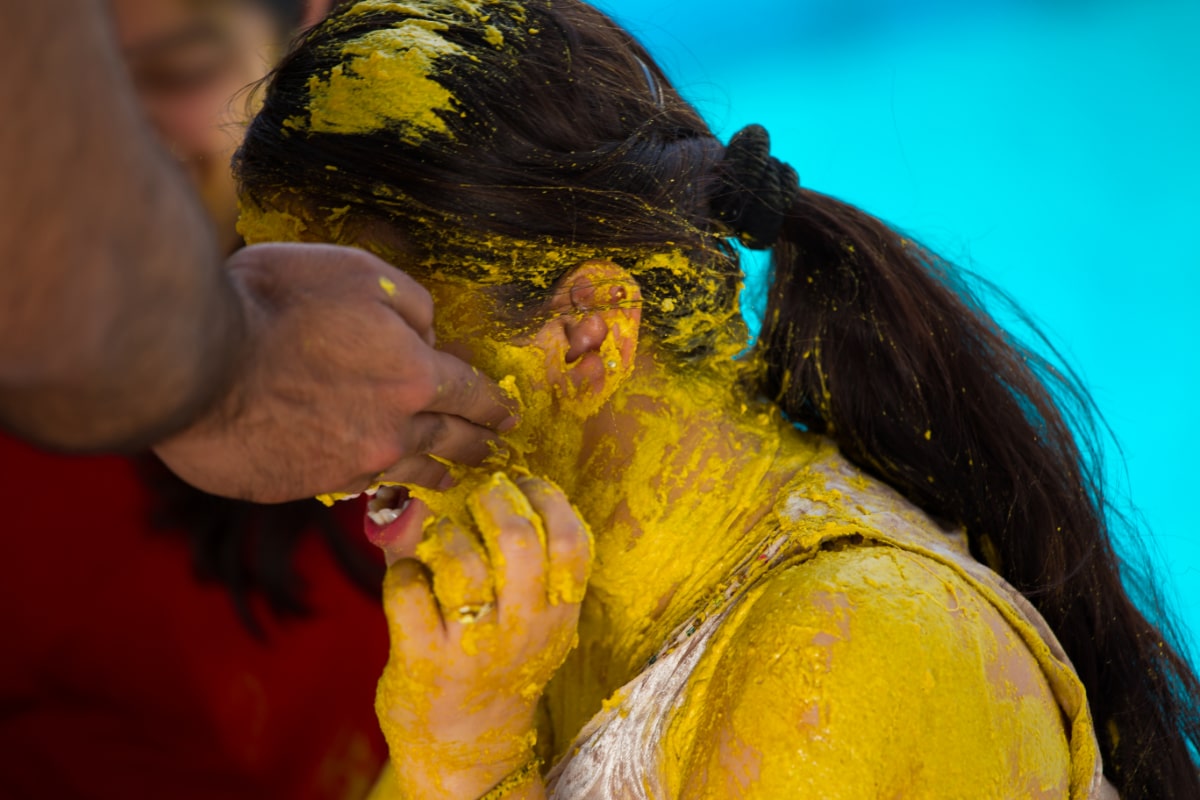
r e e v i v e ‘ s Tip:
Plan to let loose and get messy! The paste is usually applied in a fun, jovial manner and it knows no boundaries! Be prepared for the yellow paste to get on your fabrics, which can be difficult to wash out.
Also, since you will most likely be outside for the ritual and may end up on the lawn, nothing too sharp on your feet (stilettos) or too long, that would drag if up barefoot!
sangeet / garba
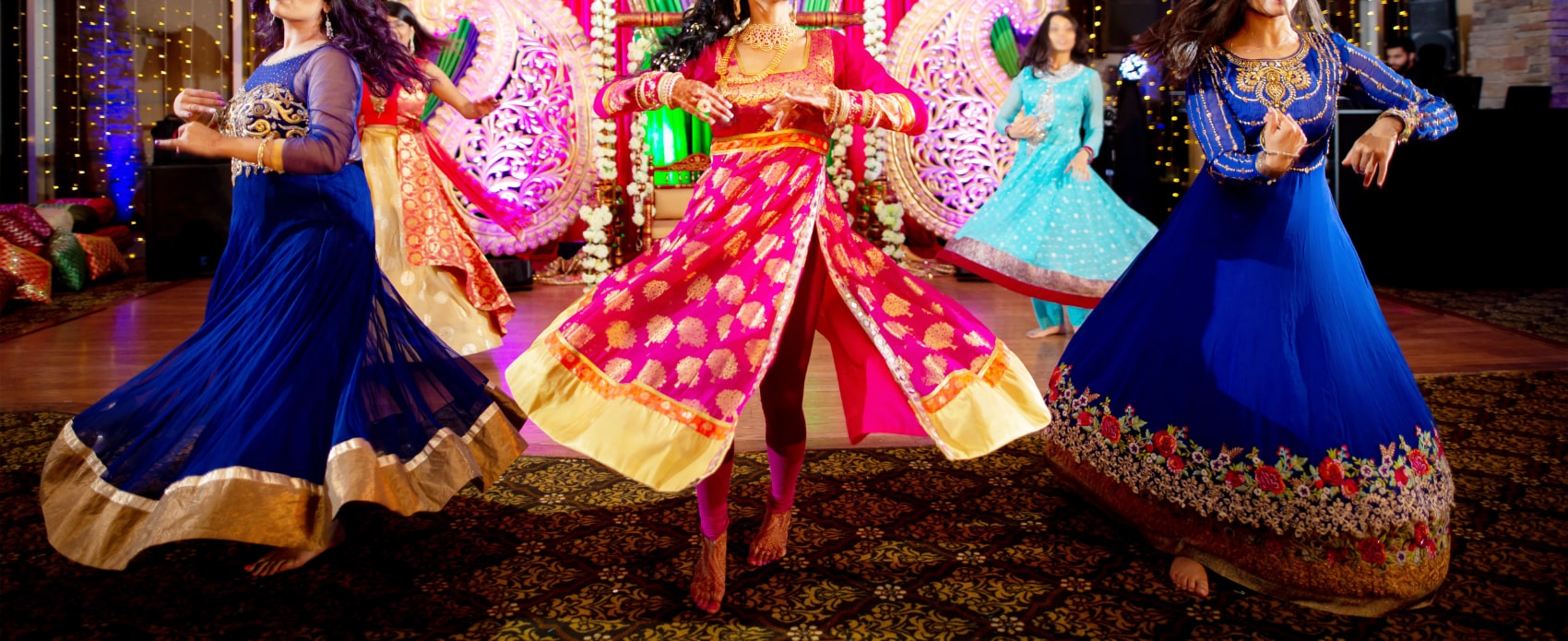
The Sanskrit word Sangeet translates to "music." This pre-wedding party is filled with music and dance, celebrating the joining of the couple and the bonding of their families. Some cultures, specifically Gujarati, may call this evening the “Garba Night.” Garba is a traditional dance defined by its circular dance movements. Either way, expect to be entertained with choreographed routines, food, spirits, and a night of Bollywood beats! This event is commonly held at a banquet or reception hall with a stage and/or dance floor.
Dress: The first occasion to really style up and get chic ! Traditional outfits such as lehenga's, anarkali's, embroidered suits, and indo-western looks are most befitting, don't be afraid to be playful in your look! Bold colors and statement jewelry are a yes! Also, comfortable shoes are a must if you plan to dance!
r e e v i v e ‘ s Tip:
If you’re performing a routine or plan to do a lot of dancing, we suggest you avoid anything that will weigh you down or prohibit you from moving freely. We also caution against wearing a sari, unless you are very comfortable dancing in one and have it pinned tightly in place.
wedding
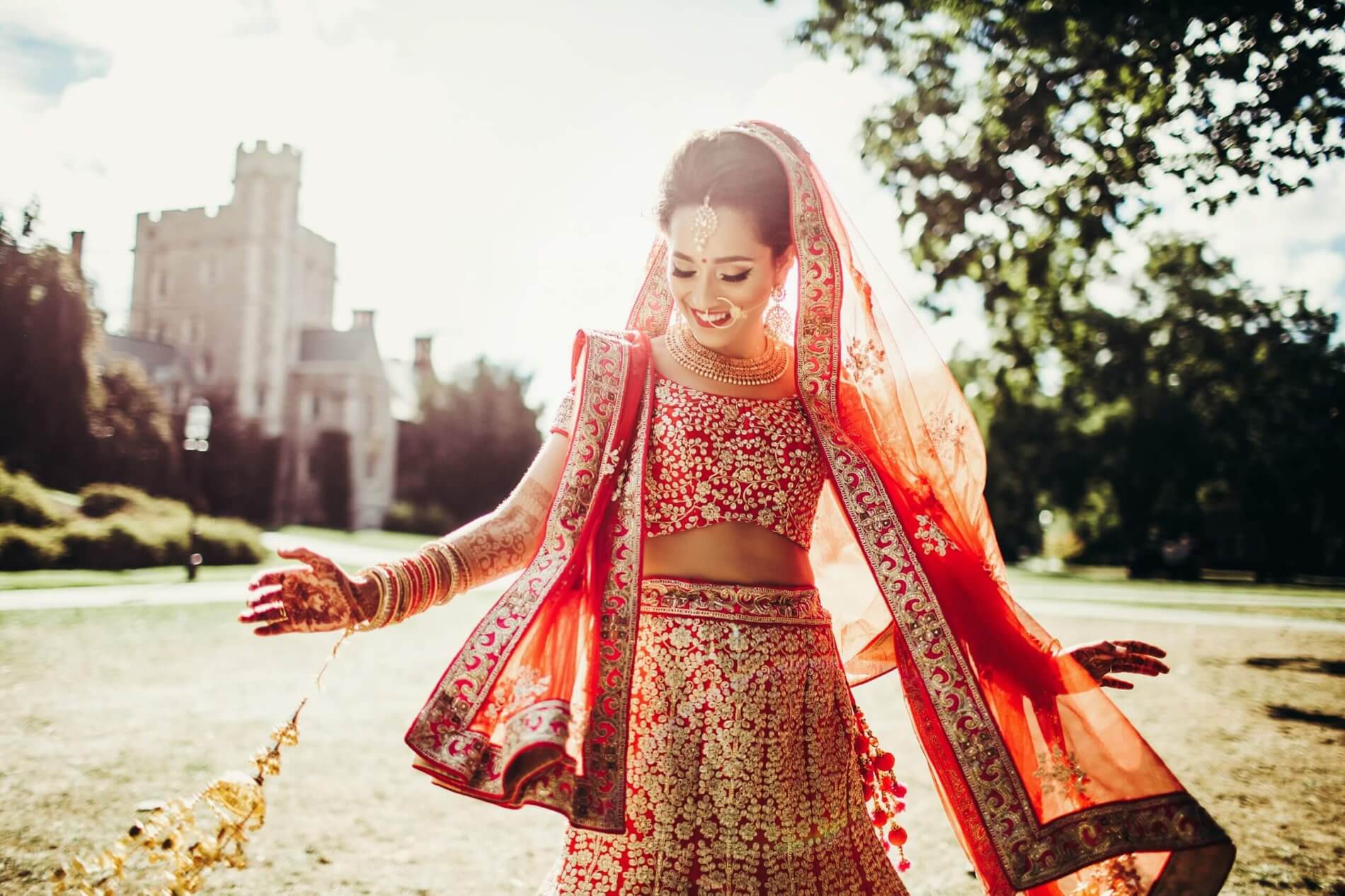
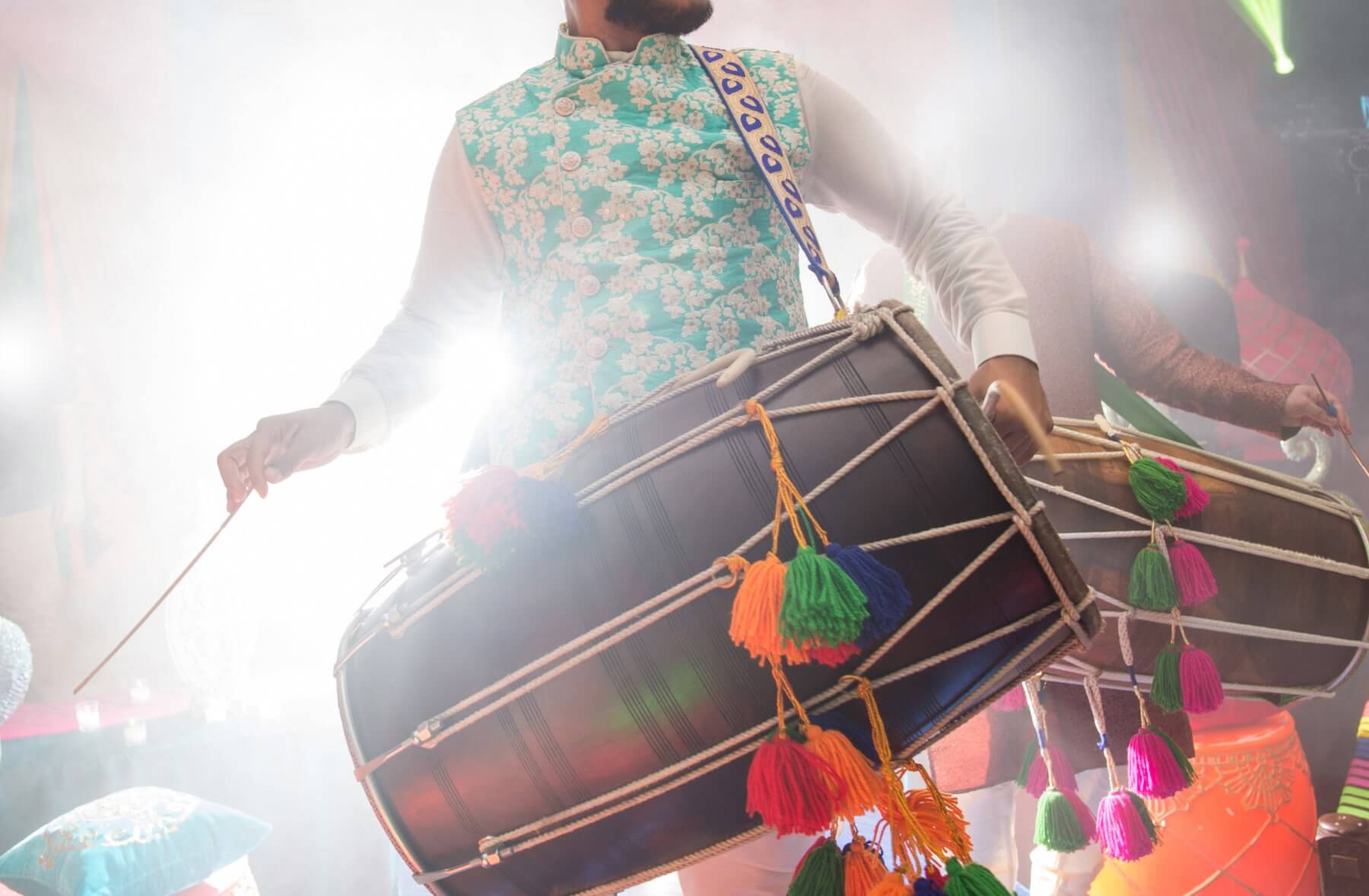
At last, the big day! In a typical Hindu wedding ceremony, the day usually starts with the Baraat, or procession (or parade), in which the groom arrives to meet his bride on horse/ elephant/ car/ yacht/ [insert means of transportation]. His family, friends, instrumentalists/ DJs, will be by his side ... singing, dancing, and cheering him on to the mandap (or altar) where the bride and her guests await.
The groom and his guests will be received and welcomed by the bride's family and after a brief prayer, the ceremony commences. In a traditional Hindu ceremony, prayers are read aloud and vows are exchanged in front of an open fire.
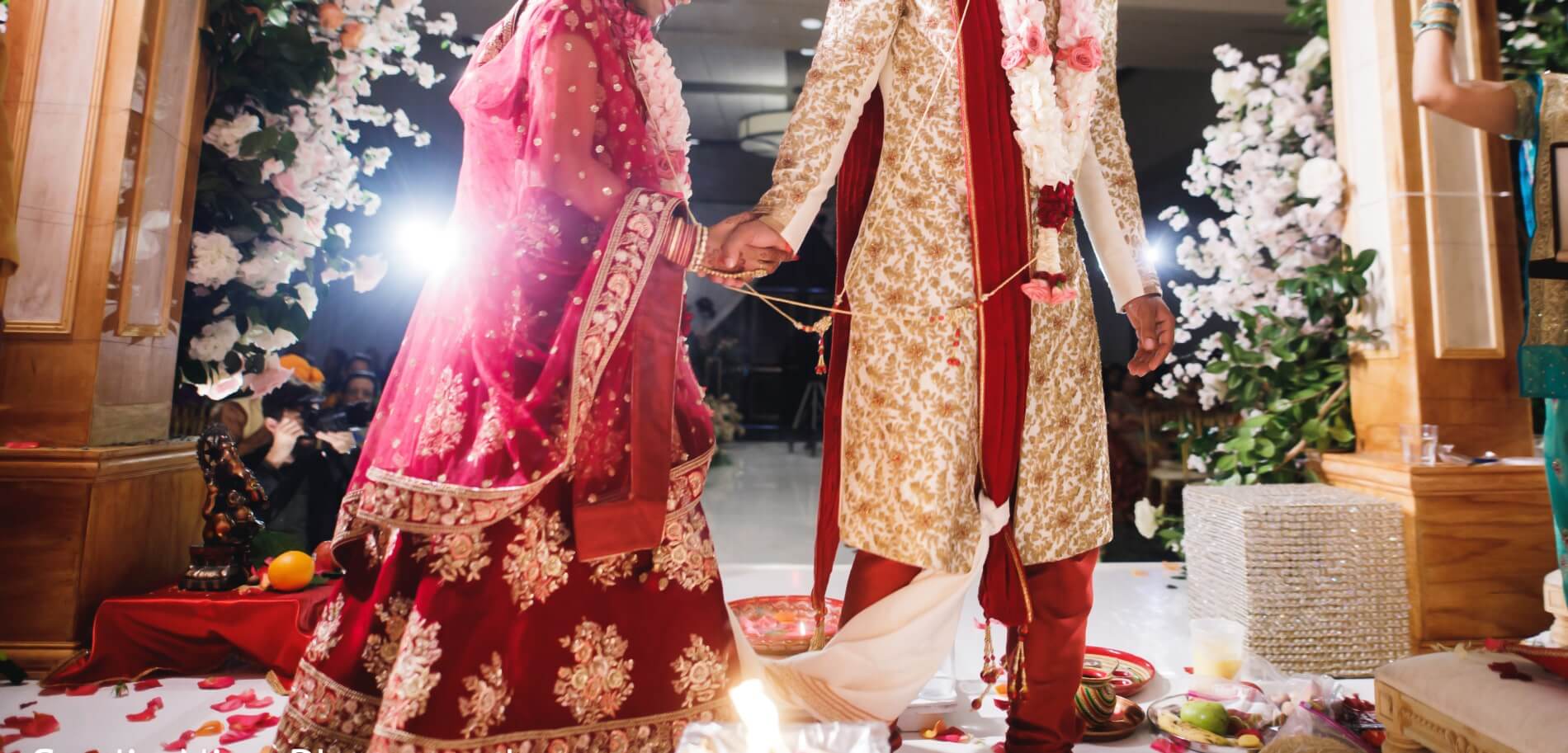
Dress: Traditional, understated outfits with minimal embellishments are the most suitable for guests. Since this is the religious aspect of the festivities, avoid anything too revealing, short, or any denim. Also avoid black, white and red! Bring a scarf in case covering your head is the proper respect, especially for a North Indian or Sikh wedding. Tone down and adjust your makeup for natural light.
Bride: A heavily detailed sari or lehega is most appropriate. Be prepared to finish the look with large pieces of traditional gold jewelry. Each region of India follows their own traditions with regard to color and styles, make sure to check out our Bridal Collection to help you out!
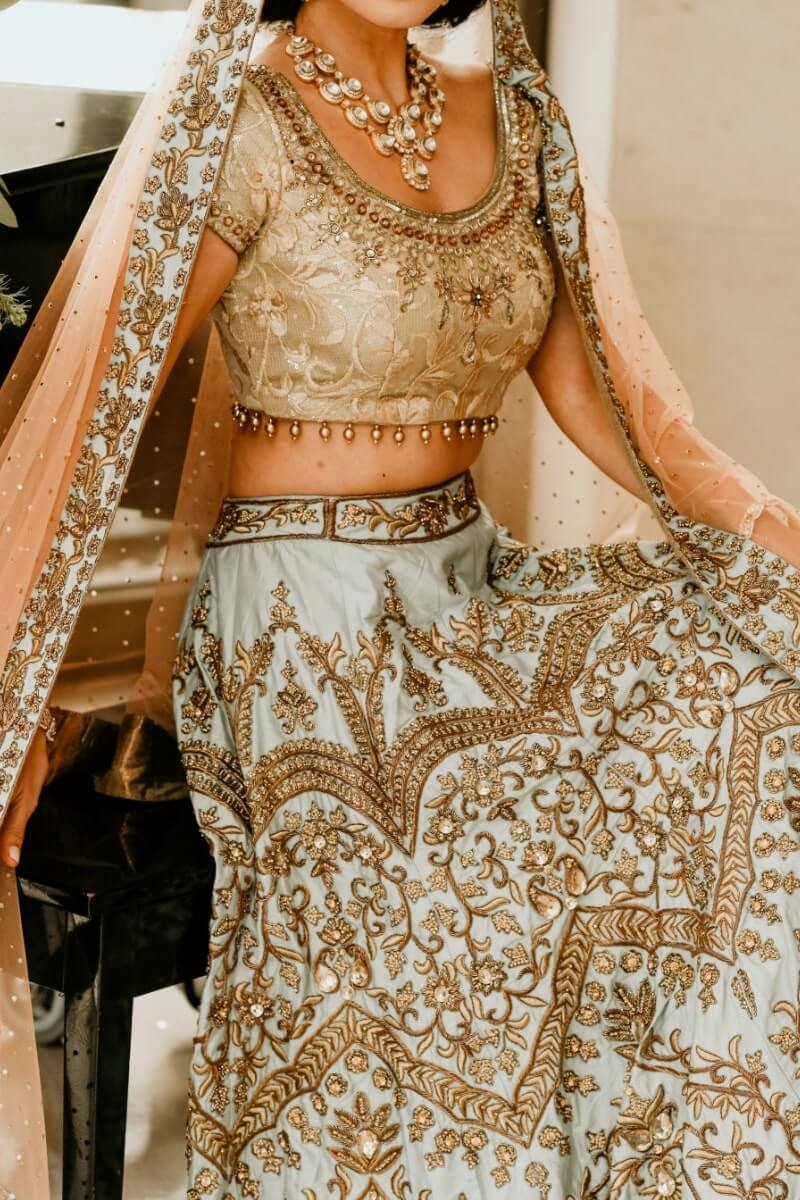
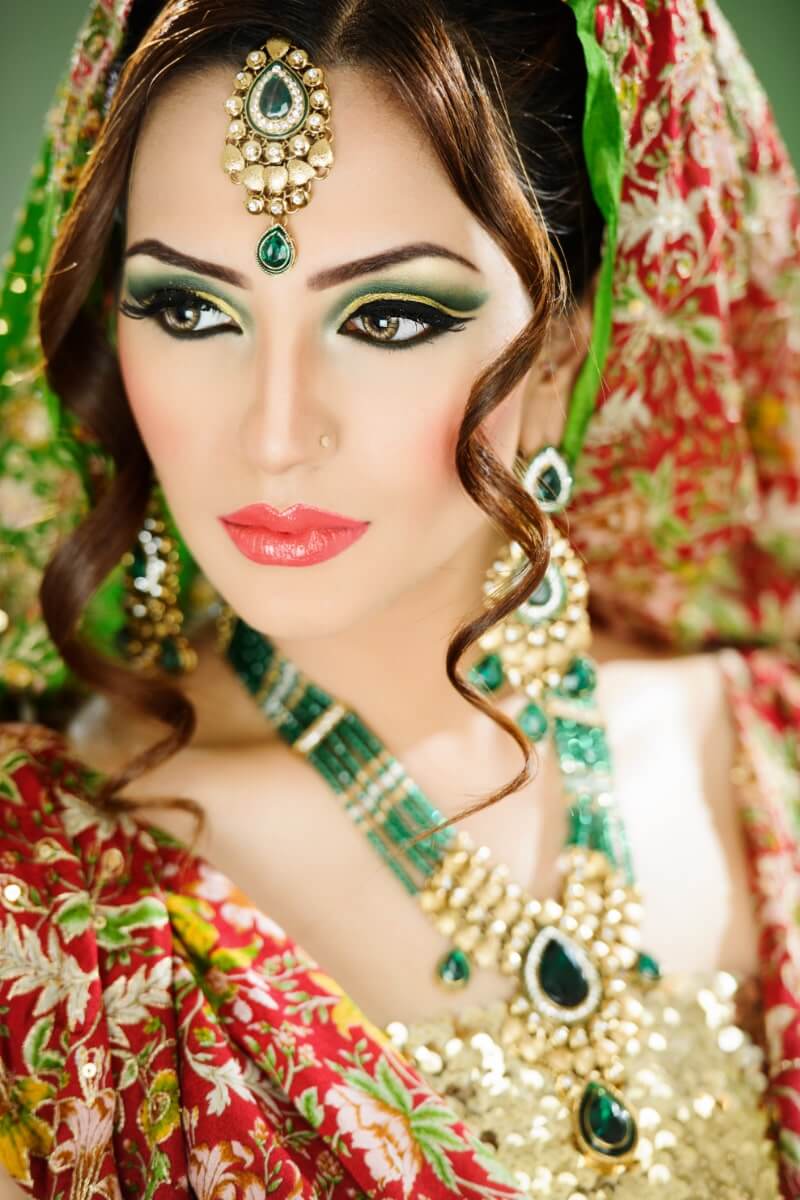
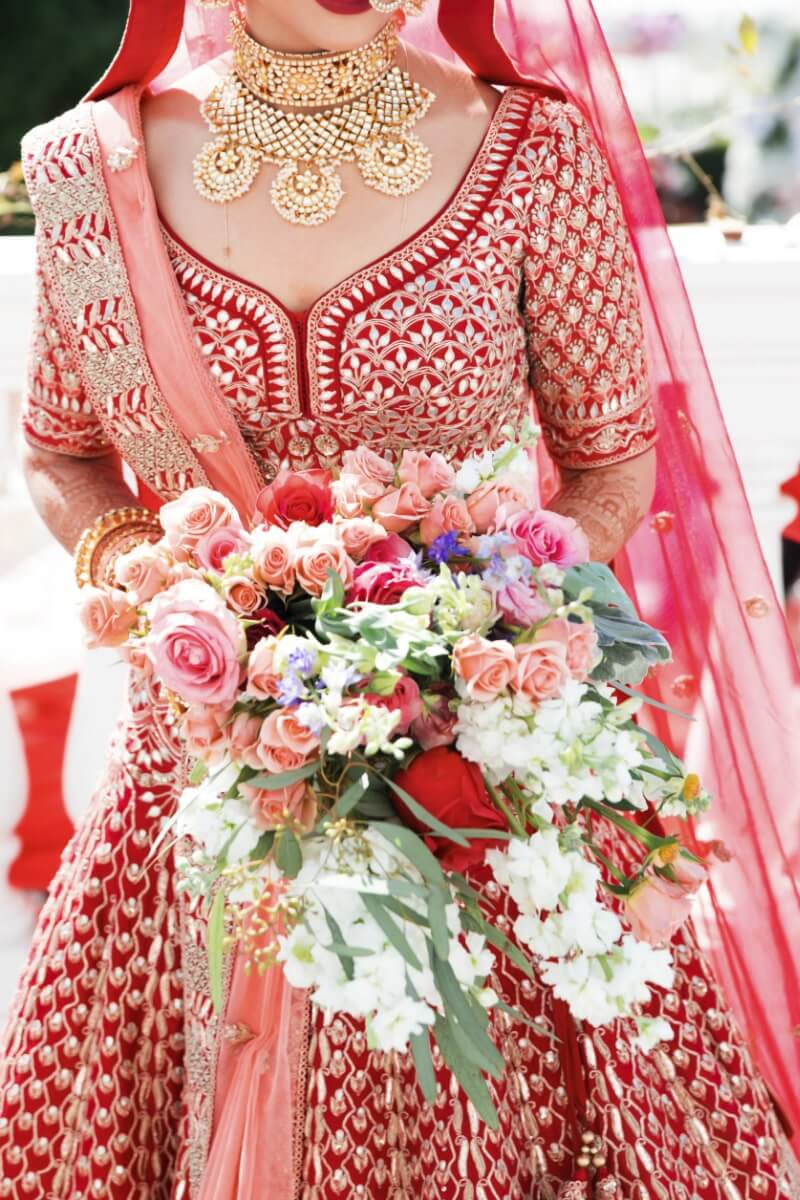
reception
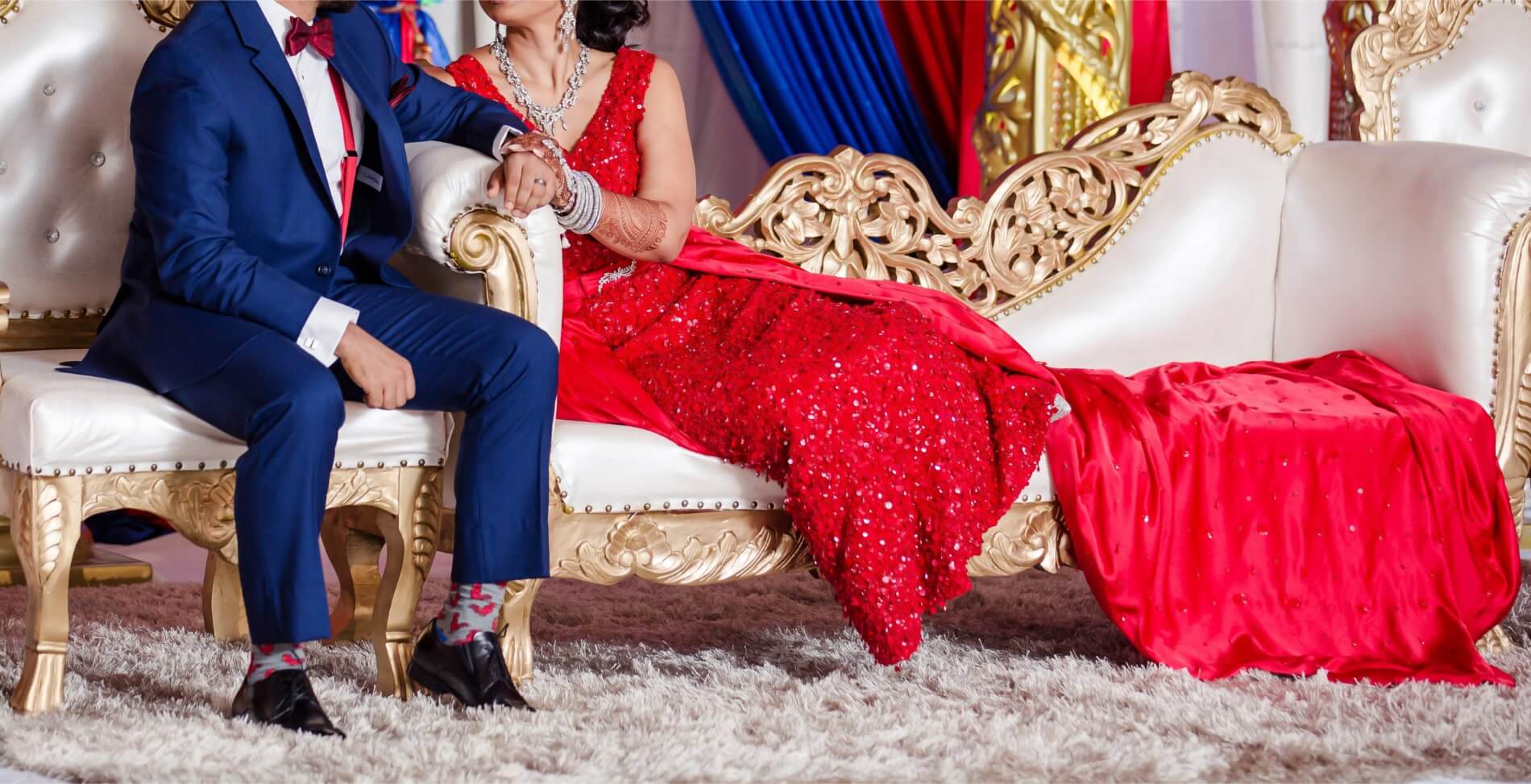
Dress: Time to get out your finest! Unless you know the reception will be casual from the invitation, there is no over doing it! Embroidered or heavy sarees, lehengas, anarkalis, and fancy salwar kamis all work. Unlike the ceremony, a shorter blouse and a little skin shouldn’t be an issue. If you opt to wear a Western dress, a gown or longer style is most suitable. Jewelry pieces, such as statement necklaces, jeweled earrings, bangles, etc., are integral to perfecting your look, along with heavier makeup application! Truly a time to dress to impress!
r e e v i v e ‘ s Tip:
Unlike typical Western weddings, there is usually an outfit change between the Indian wedding ceremony and the reception for both the bride and guests. If you don’t plan to go home between pack a second outfit to add some glam to the reception.

sari
Elaborately tied fabric, usually draped from the shoulders to ankles. One of the most traditional and mature looks, appropriate for almost every formal Indian function, especially Hindu wedding ceremonies and other religious events. If you choose to wear a sari, find one in silk, crepe, chiffon or georgette that displays intricate and detailed embellishments.
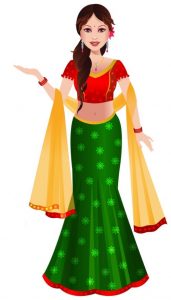
lehenga with dupatta
Two part garment comprised of a long skirt with tight blouse that comes in various shapes and lengths. More trendy, especially with younger/ modern women and easy to move in.
Dupatta: Scarf or shawl usually styled over all South Asian clothing (aside from the sari)

salwar kamis/ suit
Generic term for a tunic top or dress -like garment which is often worn with differing styles of pants (i.e. skinny, straight, wide-leg, etc). They come in several fabrics and the elaborateness varies tremendously, making it suitable for a casual home gathering/ prayer, or fancy enough for a formal event.
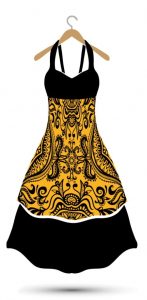
anarkali
A variation of a salwar kamis or suit, comprised of a long frock-type top that’s usually cinched or fitted below the chest. These ensembles are usually heavier than typical suits and are often embroidered.
